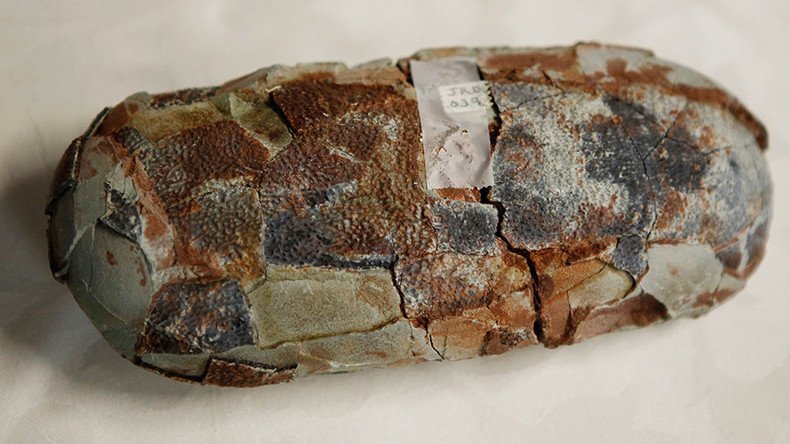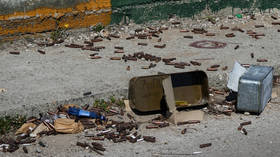‘Baby dragon’ embryo cracks 20-year giant bird-like dinosaur mystery

Scientists have finally cracked the mystery of a giant flightless dinosaur dubbed the “baby dragon from China” who they believe weighed up to three tonnes (3,000kg) and measured a staggering eight meters (26ft).
Gigantic fossilized eggs discovered in China are some of the largest ever discovered, measuring 45cm (17.7 inches) across and weighing 5 kilos (11lbs).
#Jurassic highway: Thousands of dino footprints uncovered, including rare stegosaurus tracks in Australia (VIDEO) https://t.co/9pKgdiWFeFpic.twitter.com/WfjzsUBxxR
— RT (@RT_com) March 27, 2017
The new species of oviraptorosaur is called Beibeilong sinensis and the massive creature walked the earth roughly 90 million years ago. Though the Beibeilong had feathers, primitive wings and a beak, researchers believe its sheer size and weight rendered it flightless.
Fossilized eggs and an embryo were initially discovered in the Henan province in the early 1990s, but since then little was known about the parents because adult bones had not been discovered.
The eggs and embryo, affectionately dubbed ‘Baby Louie,’ gained worldwide fame when they were featured on a National Geographic cover in 1996.
“Finally we know the parentage of the largest-known dinosaur eggs,” said the University of Calgary researcher Darla Zelenitsky who was part of the joint Chinese-Canadian-Slovakian team behind the research.
The researchers, who published their findings on Tuesday in the journal Nature Communications, cracked the mystery of the eggs which had thus far eluded other researchers by examining both the shell fragments and the bones of an embryo that died while hatching.
From this limited information, the team were able to pull enough data to determine that this was, in fact, a new species and not an offshoot of similar flightless dinosaurs that inhabited the planet at the time.
"For many years it was a mystery as to what kind of dinosaur laid these enormous eggs and nests. Because fossils of large theropods, like the tyrannosaurus were also found in the rocks in Henan, some people initially thought the eggs may have belonged to a tyrannosaur," Zelenitsky said.
70mn yo dinosaur eggs with embryos inside unearthed in Argentina https://t.co/z0w0cw9ZI8pic.twitter.com/V0TRIHnX7F
— RT (@RT_com) April 16, 2017
"Thanks to this fossil, we now know that these eggs were laid by a gigantic oviraptorosaur, a dinosaur that would have looked a lot like an overgrown cassowary. It would have been a sight to behold with a three ton animal like this sitting on its nest of eggs," she added.













